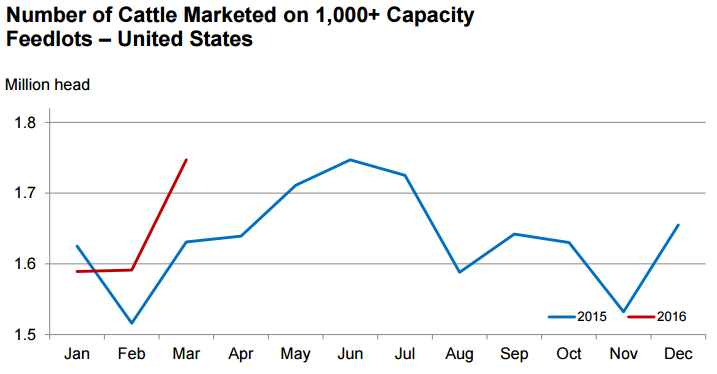Cattle On Feed: Feedyards Increasing Capacity, Herd Expansion Slows Down
It appears herd expansion has tapered off as feedlots start to increase inventories with heifers.
March placements were up 5% from 2015 with 1.89 million head of calves entering feedlots, according to USDA’s Cattle On Feed report.
Placements by weight are as follows:
- 600 pounds or less = 352,000 head
- 600-699 pounds = 275,000 head
- 700-799 pounds = 495,000 head
- 800 pounds and greater = 770,000 head
There were 4% more heifers in feedlots on April 1 compared to the same time last year. Approximately 150,000 more heifers were in feedlots to start April, indicating replacement heifer retention has slowed down.
Steers were down 1% in the report with 7.36 million in feedlots on April 1. Steers account for 68% of the total inventory.
Overall feedlots with 1,000 or more capacity had 10.9 million head of cattle on feed on April 1, up 82,000 head from the same time last year.
Western cattle feeders had mixed results in terms of capacity. California was down 6% from the previous year and 5% from last month at 420,000 cattle on feed. Arizona saw the largest increase of any state at 26% from last year and 2% since March. Arizona cattle feeders have 303,000 head in feedyards.
Minnesota and South Dakota both continue to see large increases in their feedlot capacities year-over-year and slight drops from last month. Minnesota was up 10% from last year, but down 2% since March. South Dakota was up 13% for the year and down 2% from the previous month. Those states combine for a total capacity of 425,000 head in feedlots with 1,000-plus capacity.
The top 5 cattle feeding states for 1,000-plus capacity feedlots are as follows:
- Texas: 2,500,000 head
- Nebraska: 2,420,000 head
- Kansas: 2,180,000 head
- Colorado: 900,000 head
- Iowa: 640,000 head
A total of 1.75 million cattle went to packers in March, a 7% increase from 2015.









